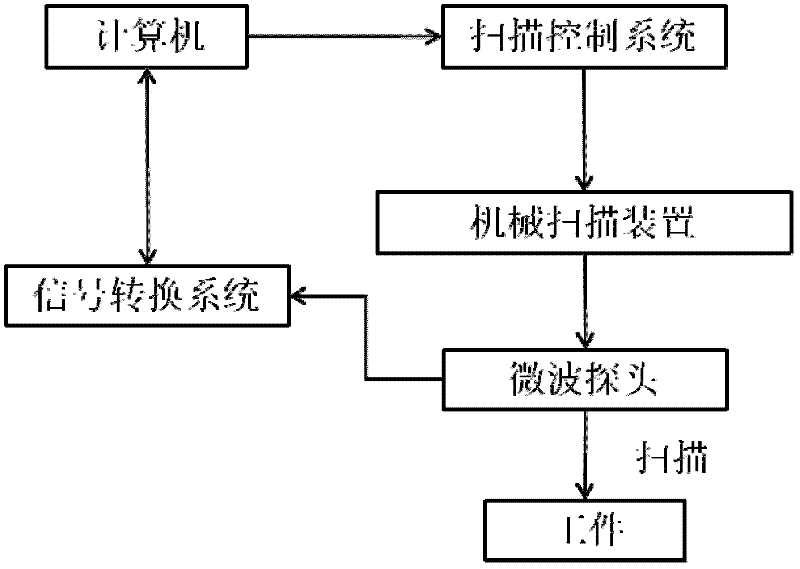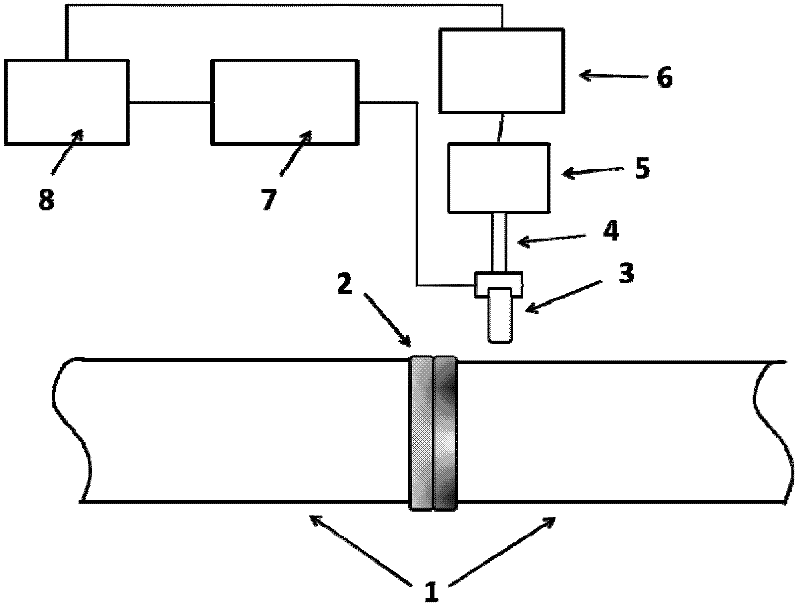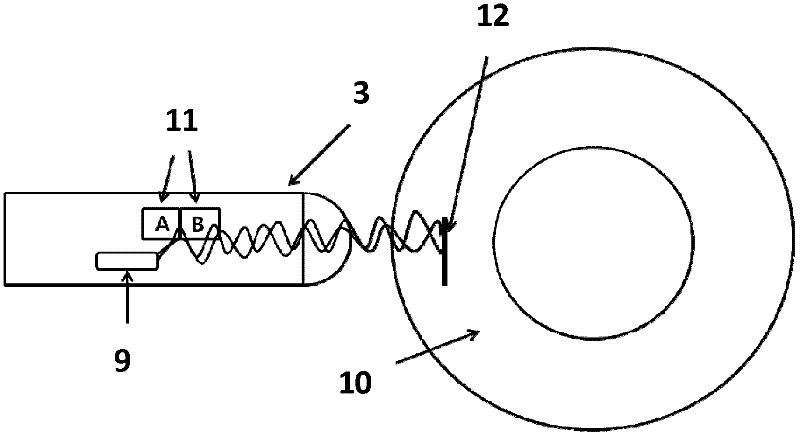Microwave scanning detection method and microwave detection device of polyethylene pipe hot-molten joint
A hot-melt joint and scanning detection technology, which is applied in the direction of using microwave flaw detection, can solve the problems of not finding detection methods, achieve rapid detection, and avoid material pollution.
- Summary
- Abstract
- Description
- Claims
- Application Information
AI Technical Summary
Problems solved by technology
Method used
Image
Examples
Embodiment 1
[0049] The microwave detection device provided by the invention is used to detect a perfect polyethylene pipe hot-melt joint. First, the outer surface of the joint is simply treated to make it smooth and flat, and then the joint is detected according to the steps in the technical solution provided by the present invention. The microwave frequency used is 24 GHz, and the scanning speed is 10 cm / s. The distance between the outer surface of the joint and the joint is controlled at 3 cm; in this embodiment, the signals recorded by the receiving sensors A and B are respectively displayed through the baseline amplitude, and the obtained microwave scanning images are shown in Figure 4 . In the figure, the X coordinate represents the axial direction, and the Y coordinate represents the radial direction. The heat affected joint has a width of approximately 0.25 inches and a midline at approximately Y=2. The scanning image of the hot-melt joint is relatively uniform in the entire axi...
Embodiment 2
[0051] A polyethylene pipe hot-melt joint containing cold welding defects is detected by using the microwave detection device provided by the invention. First, simple treatment is performed on the outer surface of the joint to make it smooth, and then the joint is detected according to the steps in the technical solution provided by the present invention. The microwave frequency used is 24 GHz, and a uniform scanning speed is adopted. The scanning speed is 15 cm / s, and the microwave probe The distance between the outer surface of the joint and the joint is controlled at 2cm; in this embodiment, the signals recorded by the receiving sensors A and B are respectively displayed through the baseline amplitude. When the traveling microwave encounters a defect, the change in the dielectric constant makes the microwave A reflection occurs. The reflected microwave signal and the emitted microwave signal form an interference pattern, and the obtained microwave scanning image is shown in...
Embodiment 3
[0053] The microwave detection device provided by the invention is used to detect a polyethylene pipe hot-melt joint formed by applying excessive pressure during butt jointing. First, simple treatment is performed on the outer surface of the joint to make it smooth, and then the joint is detected according to the steps in the technical solution provided by the present invention. The microwave frequency used is 24 GHz, and a uniform scanning speed is adopted. The scanning speed is 14 cm / s, and the microwave probe The distance between the outer surface of the joint and the joint is controlled at 4cm; in this embodiment, the signals recorded by the receiving sensors A and B are respectively displayed through the baseline amplitude. When the traveling microwave encounters a defect, the change in the dielectric constant makes the microwave A reflection occurs. The reflected microwave signal and the emitted microwave signal form an interference pattern, and the obtained microwave sc...
PUM
 Login to View More
Login to View More Abstract
Description
Claims
Application Information
 Login to View More
Login to View More - R&D
- Intellectual Property
- Life Sciences
- Materials
- Tech Scout
- Unparalleled Data Quality
- Higher Quality Content
- 60% Fewer Hallucinations
Browse by: Latest US Patents, China's latest patents, Technical Efficacy Thesaurus, Application Domain, Technology Topic, Popular Technical Reports.
© 2025 PatSnap. All rights reserved.Legal|Privacy policy|Modern Slavery Act Transparency Statement|Sitemap|About US| Contact US: help@patsnap.com



